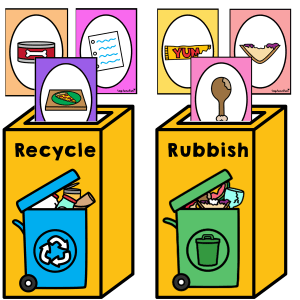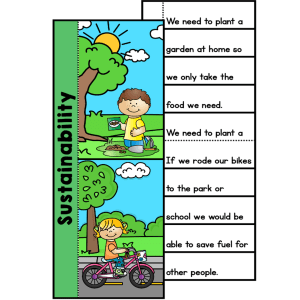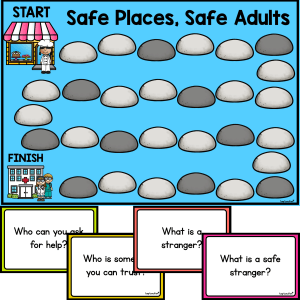Description
Support your students in developing real-world measuring skills with our interactive Choose & Use Informal Units of Mass Worksheets. This hands-on resource helps students explore which informal units best suit different items around the classroom, encouraging critical thinking and reasoning as they engage with the concept of mass. It’s the perfect way to build confidence and vocabulary before introducing formal units like grams and kilograms.
Students begin by cutting out a variety of informal units provided at the bottom of the worksheet. Units may include items like counters, dominoes, linking cubes or even pencils. Students will consider which unit makes the most sense for measuring each object based on size, shape and practicality. The resource encourages flexible thinking by allowing students to rearrange and reassign their unit choices before committing to them with glue. After choosing the most suitable unit for each item, students use a balance scale to compare masses and record the number of units needed.
This activity is ideal for Foundation to Year 2 learners and is provided in three differentiated versions. Each version increases in complexity, with additional items to measure and a greater variety of units to choose from. This scaffolding makes the worksheets ideal for mixed-ability classrooms, Maths rotations or as a progression task across multiple sessions. It’s also a great opportunity to build vocabulary such as lighter, heavier and equal mass in a tangible and meaningful way.
Key Learning Outcomes:
- ✅ Identify appropriate informal units for comparing and measuring mass
- ✅ Make reasoned decisions about unit selection based on object properties
- ✅ Use a balance scale to compare mass accurately
- ✅ Record, compare and communicate findings using simple measurements
- ✅ Engage in critical thinking and hands-on experimentation with mass
What’s Included:
- Three differentiated worksheet versions:
- - Version 1: Smaller number of objects and basic unit selection
- - Version 2: Increased variety of objects and informal units
- - Version 3: More complex comparisons and extended object list
- Cut-and-paste informal unit choices
- Clear layout and simple recording format for early learners
- Suggested answer sheet for unit allocation guidance (answers may vary)
Materials Needed:
- Printed worksheet copies (Version 1, 2 or 3 as appropriate)
- Scissors and glue sticks for cutting and pasting unit options
- Balance scales for comparing object mass
- Everyday classroom items such as stationery, toys or containers
- Optional: tubs of informal units like counters, cubes or blocks
How to Use:
- Introduce or revise the concept of mass using informal units. Show examples of balance scales and model comparisons.
- Distribute the appropriate worksheet version to each student or group.
- Have students cut out the informal unit options and test out different unit choices by visually comparing object sizes.
- Once satisfied with their selections, students glue down their chosen units next to the listed objects.
- Using a balance scale, students measure each item using their selected unit and record the number of units required.
- Conclude with a class discussion about why some units were easier to use than others for certain objects.
Ideas for Classroom Use:
- 💡 Use during small group Maths rotations to build measurement vocabulary
- 💡 Create a ‘measurement station’ with informal units and scale for ongoing exploration
- 💡 Use as a follow-up to informal mass scavenger hunts to reinforce reasoning
- 💡 Allow early finishers to create their own comparison items or try swapping units
- 💡 Build towards formal unit lessons by comparing informal and standard measurements
Top Teacher Tips:
- 💛 Print worksheets on coloured paper for version differentiation
- 💛 Pre-select or label classroom objects to streamline setup
- 💛 Laminate unit cut-outs for durability and reuse across multiple lessons
- 💛 Model reasoning aloud when selecting units to support student thinking
Choose & Use Informal Units of Mass Worksheets are a great way to support hands-on, inquiry-based learning. With clear scaffolding, practical comparisons and real-life classroom links, this resource will help young learners build a strong foundation in measurement through exploration and fun.
Additional information
| Number of Pages | 5 |
|---|---|
| File Format | |
| Australian Curriculum Code | AC9M1M01, AC9M2M01 |
Australian Curriculum V9
F - 6
Lorem ipsum dolor sit amet, consectetur adipiscing elit.
Lorem ipsum dolor sit amet, consectetur adipiscing elit.
Lorem ipsum/ Lorem ipsum/ Lorem ipsum
Lorem ipsum dolor sit amet, consectetur adipiscing elit.
Lorem ipsum dolor sit amet, consectetur adipiscing elit.
Lorem ipsum/ Lorem ipsum/ Lorem ipsum
Lorem ipsum dolor sit amet, consectetur adipiscing elit.
Lorem ipsum dolor sit amet, consectetur adipiscing elit.
Lorem ipsum/ Lorem ipsum/ Lorem ipsum
Lorem ipsum dolor sit amet, consectetur adipiscing elit.
Lorem ipsum dolor sit amet, consectetur adipiscing elit.
Lorem ipsum/ Lorem ipsum/ Lorem ipsum
Lorem ipsum dolor sit amet, consectetur adipiscing elit.
Lorem ipsum dolor sit amet, consectetur adipiscing elit.
Lorem ipsum/ Lorem ipsum/ Lorem ipsum






